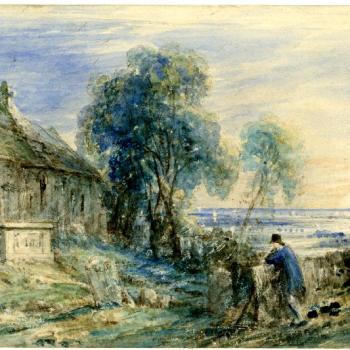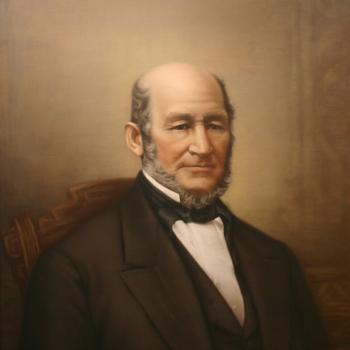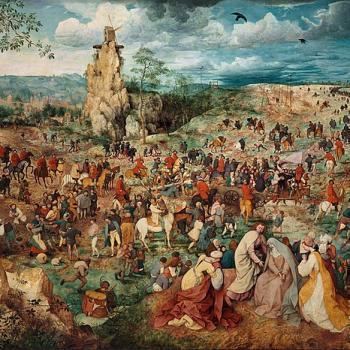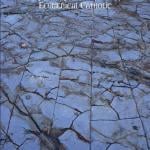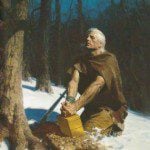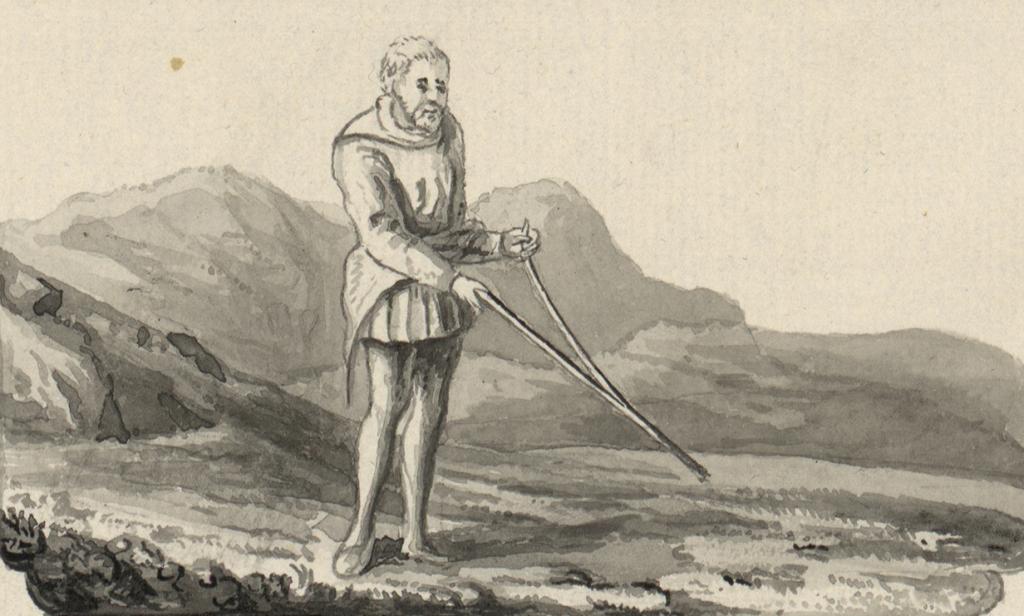
(Wikimedia Commons public domain image)
Three or four times, perhaps, I’ve publicly mentioned my one and only direct experience with water witching, or dowsing, with a divining rod. It was successful, completely against my expectations and to my considerable shock. (See one account here.) Although I’ve simply described what happened in my case without drawing any grand conclusion from it, I’ve been severely ridiculed in certain quarters for recounting the story. (It seems that some critics’ professed commitment to transparency and accurate history isn’t very deep, or, at least, that their ideological commitments and/or their need to be seen as conforming to acceptable elite opinion and/or their urge to mock me are deeper.)
Anyway, with that as background, you’ll understand why this passage, from Eric A. Eliason, “Seer Stones, Salamanders, and Early Mormon ‘Folk Magic’ in the Light of Folklore Studies and Bible Scholarship,” BYU Studies Quarterly 55/1 (2016): 73-93, caught my attention. Eric Eliason (Ph.D., University of Texas at Austin) is a folklorist in the Department of English at Brigham Young University:
The presumption that the difference between magic and proper belief is something intrinsic rather than relational to the definer is still very much alive. But on close analysis, complex definitions distinguishing “magical” from “modern” thinking rarely amount to more than “What you do is superstition, while what I do is science or true religion.” One of the biggest surprises rural students have in American university folklore courses, including at BYU, is discovering their suburban peers need to be taught what divining rods are and how to use them. Today, regardless of class, race, education, wealth, region, or religion, rural students tend to know of holding a forked stick gently in one’s hand to feel for the downward tug that points to underground water and a good spot for a well. Dowsing seems not only understandable, but essential, in rural areas where families are on their own to secure water, and where hired well drillers make no guarantees and charge by the foot. City kids are shocked that their country classmates could be such shameless occult dabblers in a modern age where you don’t have to think about where water comes from. You just turn on the tap and out it comes — like magic. My rural LDS students don’t understand why their suburban counterparts have so little respect for or belief in a common spiritual gift often displayed by their educated and reasonable bishops and stake presidents.
It is simply wrong to assume that divining practices are some long-abandoned exotic aspect of America’s frontier past rather than a continuing worldwide phenomenon, used not only by rural Americans, but by soldiers in Vietnam to find enemy tunnels, by oil and precious metal prospecting companies, and even by contemporary salvage professionals to recover, yes, lost treasure. (82)
For what it’s worth — I’m merely reporting here — I have a friend, a former Rhodes scholar at Oxford who holds both a Stanford law degree and an M.D., who grew up in southern Arizona and who still recounts his successes there with water witching. And another friend, now passed on, was a professional landscape architect who dowsed for water lines before commencing any job. Colleagues laughed at him, he recalled, but they often cut water lines, while he reported that he never did. Finally, I remember sitting parked with my brother near a vacant lot in a St. Louis suburb. We were early for a flight and were enjoying hamburgers when, suddenly, a Department of Water and Power truck pulled up. Its driver got out, fetched a divining rod from the back of his truck, and proceeded to walk up and down the vacant lot, making notes in a small book. Then he put his divining rod back where it came from and drove away.



